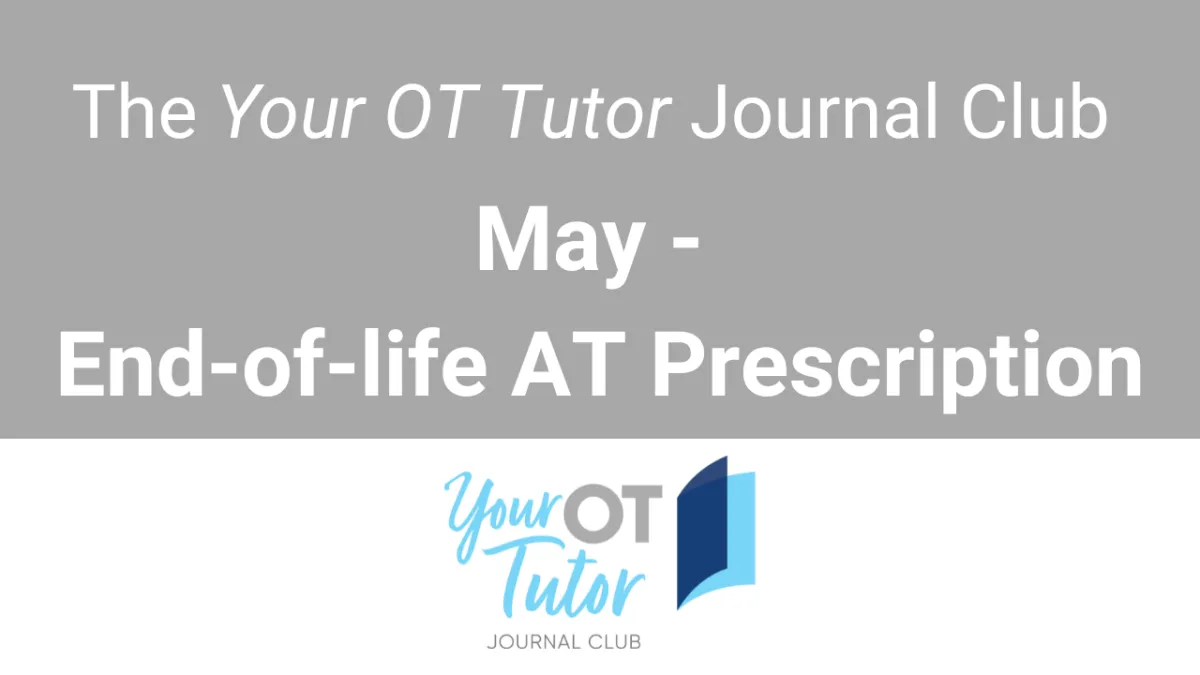
CPD for OTs - End-of-life Assistive Technology Prescription
The Your OT Tutor Journal Club - The Journal Club you've been waiting for!

The details you need to know...
1. What article did we discuss? We reviewed and discussed a qualitative article that sought to understand factors that influence patient and carers use of assistive equipment to maintain participation in ADLs for people with life-limiting illnesses. The researchers conducted semi-structured interviews exploring topics such as how the equipment enabled participation in activities, and the pragmatics of choosing, using or declining equipment.
2. What ‘Research Fundamentals’ tip was covered in this session? We discussed an overview of data collection methods that may be used in qualitative research and how using a variety of methods can increase the credibility of the findings.
3. What were the key points from the article critique? We used the CASP Qualitative Studies Checklist. Key points include that there was a clear research objective and a qualitative approach was appropriate, but there were some limitations in the study design (or at least in the information outlined in the article). Some limitations were due to the nature of the study population (people with life-limiting conditions had fluctuating, sensitive needs), while other decisions were based on the pragmatics of funding and time. Clear findings and a range of perspectives were still covered, so it is worth reading and considering similarities with your own clinical caseload.
4. What were some of the key take home messages from the discussion? OTs may be working with clients experiencing a range of functional difficulties that could benefit from equipment (e.g. decreased mobility, fatigue and brain fog). We need to ensure we build good rapport to be able to judge the optimal timing to introduce equipment and so that we can consider a range of possible contributing factors if the client declines equipment when offered. It is important to ensure detailed education for how to use equipment is provided to avoid abandonment, and that regular follow-up occurs due to the rapidly changing nature of their function.
5. How are OTs going to use what they learnt in this session? Some OTs were keen to share this article with others, to use OT models to guide their holistic approach if equipment has been declined, and to get more creative with how to provide education on the correct setup and use of equipment.
You can now purchase a recording of the session, along with a range of downloadable resources. Your access to this content won’t expire, so you can revisit it at any point in the future.
SOUND INTERESTING? SIGN-UP TODAY!
You'll get unlimited access to the content so you can revisit it whenever you need to.
If you are an OT student, my mission is to turn you into proud #OTNerds that love evidence-based practice and learning, so you can access this content for FREE! Click on the button below and send evidence of your student status and you'll be given access ASAP!
If you are an OT (or other interested health professional - all welcome), click on the button below to make your purchase for $25. You'll receive immediate access to the preparation resources via the Your OT Tutor Learning Management System!
Turns out this session isn't for you, but you're still interested in being added to the Your OT Tutor mailing list? Add your details by clicking on the button below to stay up to date with the latest Your OT Tutor resources and courses.